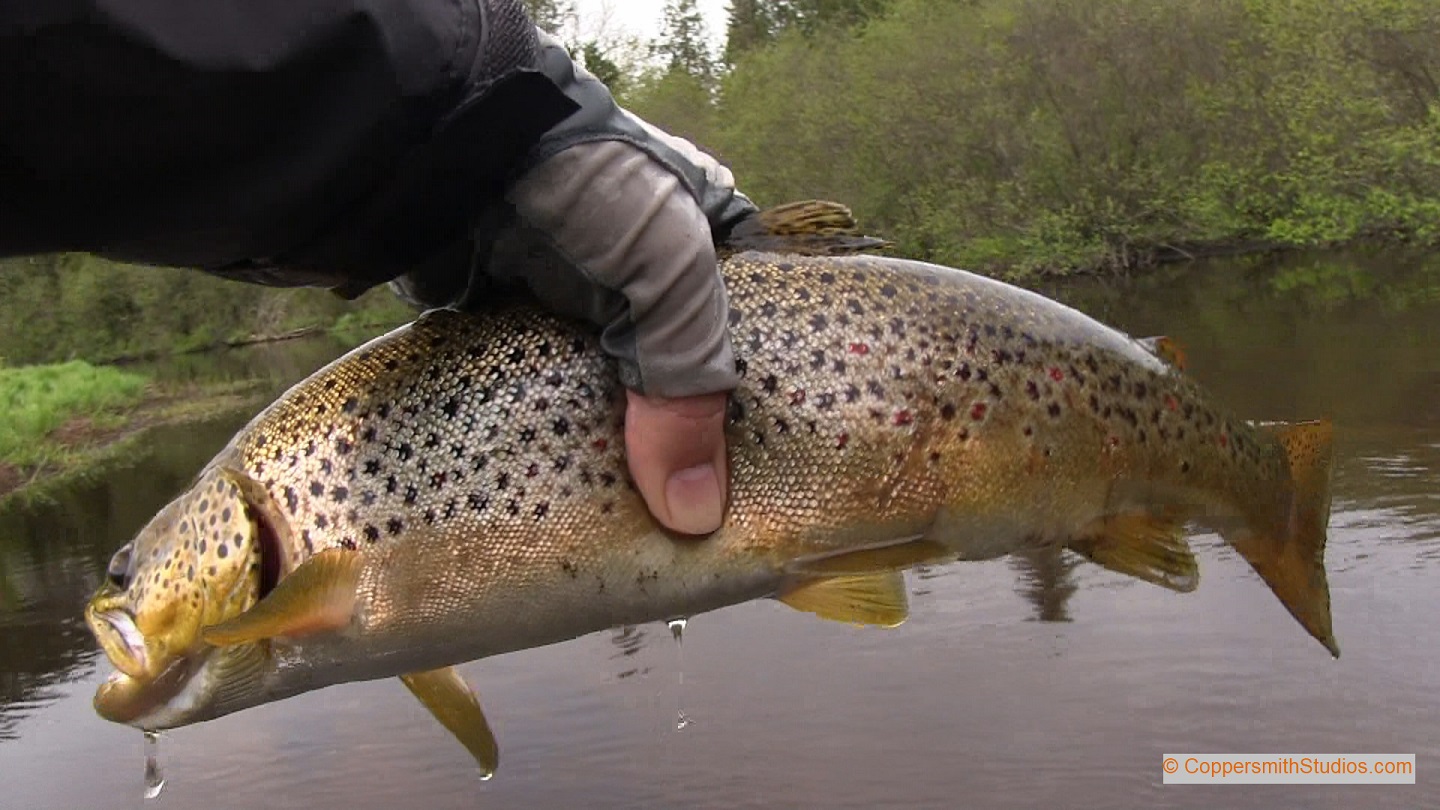 |
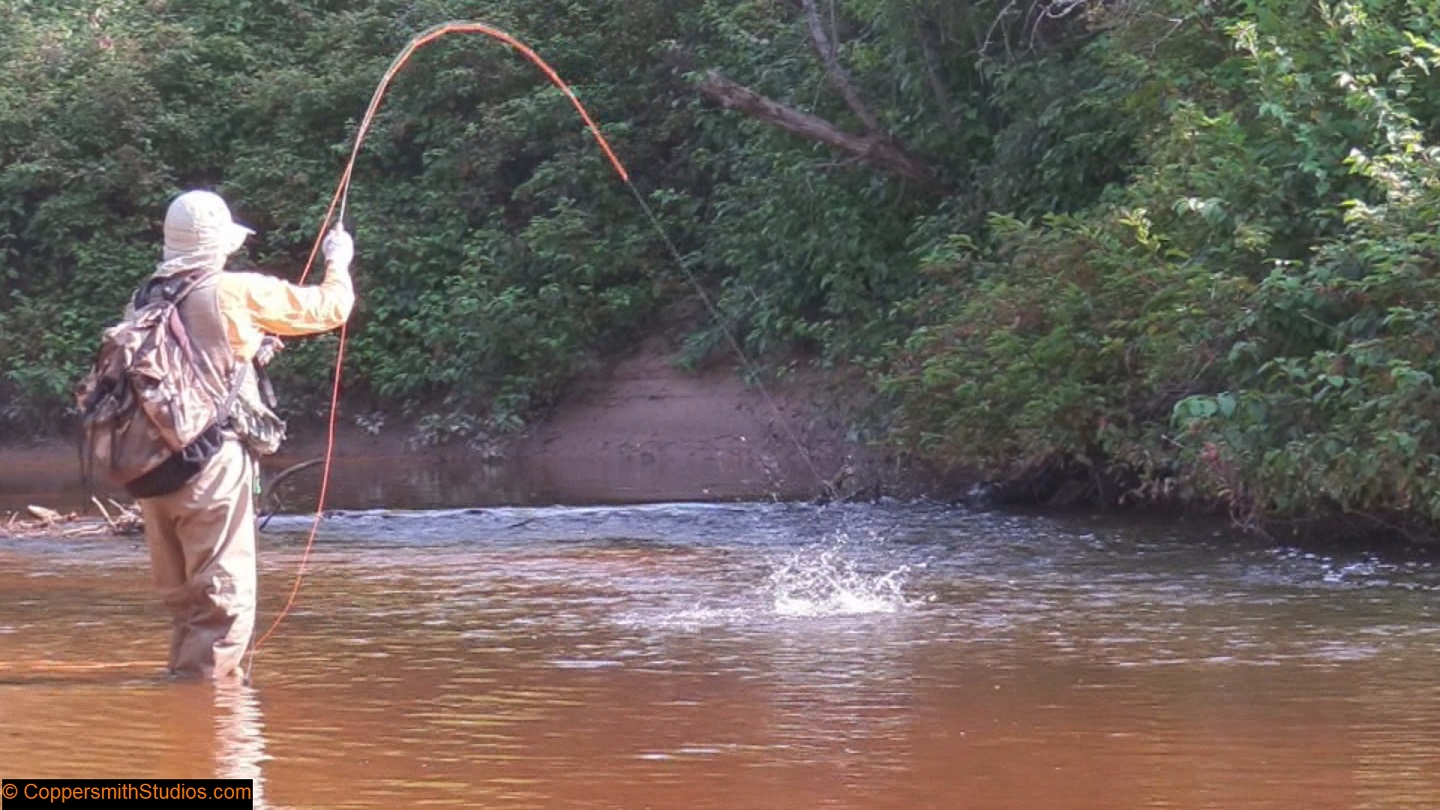 |
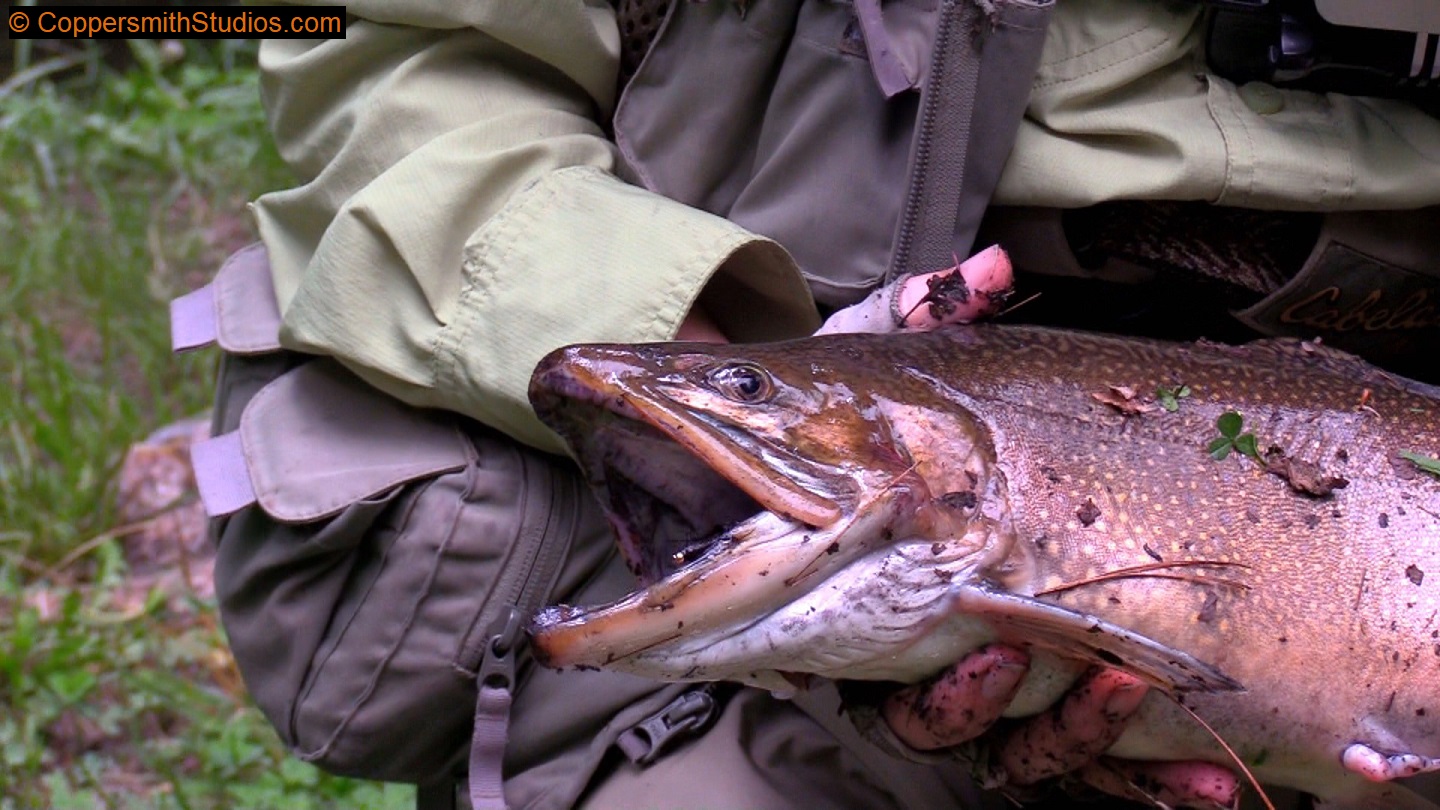 |
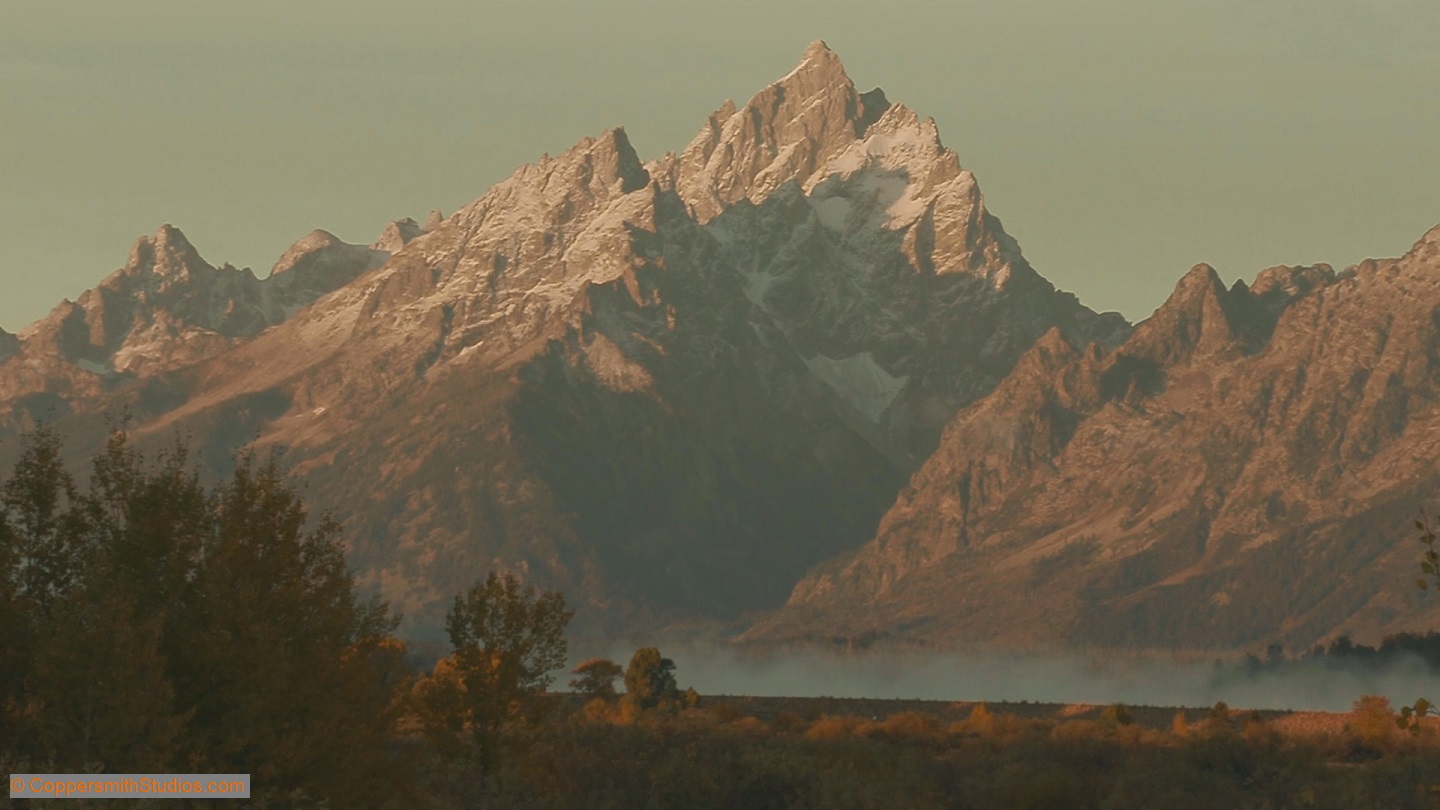 |
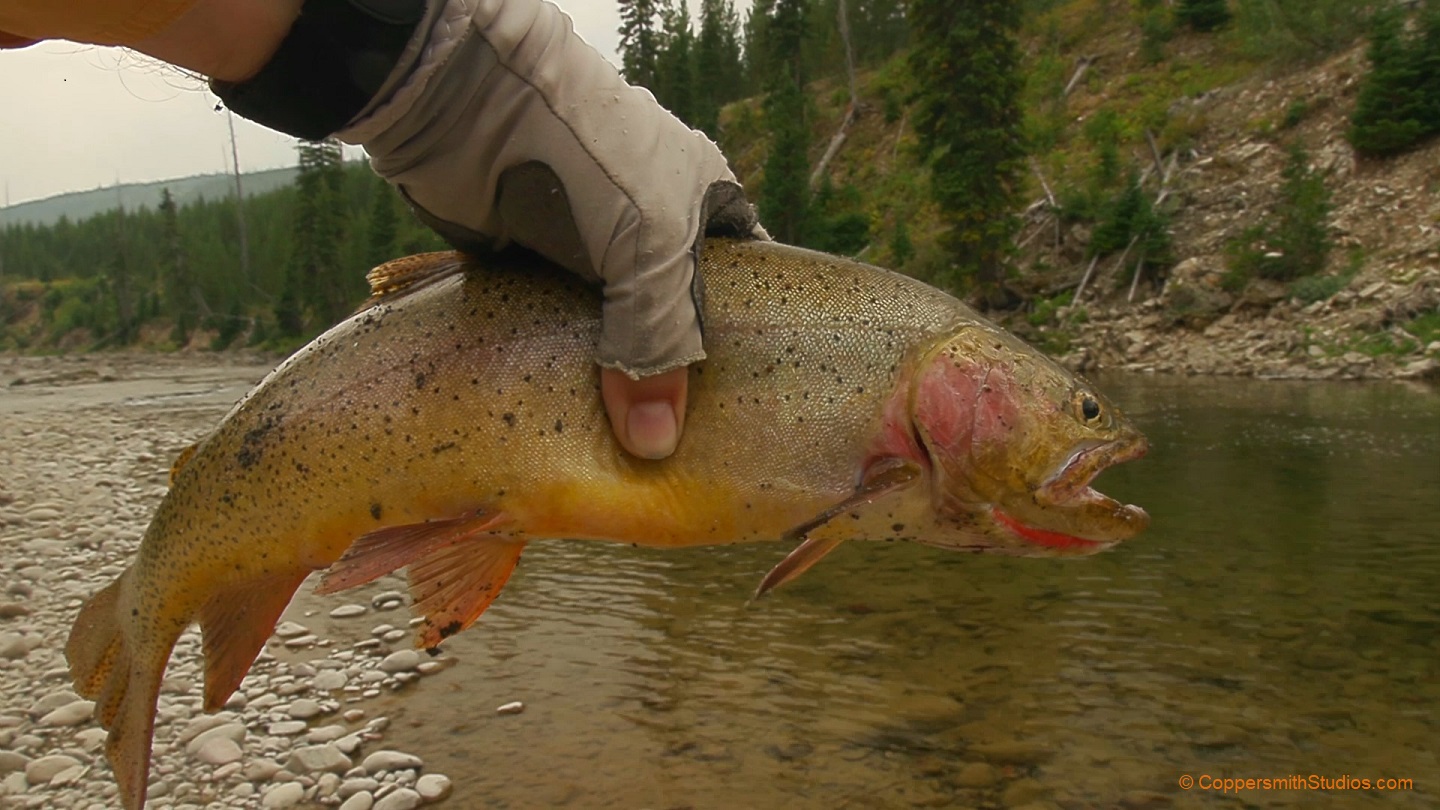 |
Stream via PATREON or CLICK BELOW TO PURCHASE.
DVD: How to Fly Fish with a Spinning Rod
DVD: Trout Streams of the Tetons
DVD: Trout Streams of Michigan, U.P. West
DVD: Trout Streams of North Carolina, West
DVD: Trout Streams of Virginia
DVD: Trout Streams of Southwest Wisconsin, North
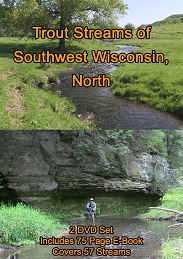
CoppersmithStudios@gmail.com
Since I began creating quality video documentation and information about trout streams I have received many complaints from anglers that I am going to ruin the streams. To my knowledge, the only thing I am ruining is the privilege of some individuals to have a public recreational resource all to themselves. Such privileges are not deserved and should be ruined. The people who want to have these streams all to themselves do not own the stream, they did not create the stream, they do not stock the stream and do nothing but take from it. One person told me they had fished a certain stream since they were a little kid, that their father had fished it and their grandfather had fished it, therefore no one else should know about it because he basically considers it a family asset. My thought would be it sounds like he and his family had spent enough time enjoying this public resource and now it is time for some other people and their families to enjoy. If a person really wants to have a trout stream all to themselves then they should save a million dollars and go buy a large parcel of land with a trout stream running thru it. They might find it more convenient to learn to share.
Causes of Ruin
Many people have heard from their fishing friends 'Do not tell anyone about this stream or it will get ruined'. People have heard it so much that they assume it must be true. There are a lot of untrue statements that get repeated and this appears to be one of them. Before I present my case let us first define that ambiguous word, "ruin", as causing 1) lack of access, 2) lack of fish, or 3) lack of space (overcrowding). Lack of access can be physical (e.g., an inaccessible canyon), legal (private property) or mental (lack of knowledge the access exists). No one has any obligation to tell others where they fish, but going out of your way to suppress information about a trout stream, as many have done in asking me to conceal the name of various streams, is an attempt at limiting mental access of the stream and therefore ruins it for those who don't know about it. I consider such attempts at ruining a stream for ones own personal gain to be unethical and self serving. It may be legal but it is wrong.
When I published my DVD about Michigan trout streams I had a fishing guide from that area accusing me of exploiting the natural resources and disapproving of my actions. The word 'exploit' means to take advantage of something for a profit. For the record, I spend considerably more money producing these films than what I get back in any royalties. I have no sponsors but myself and have never come close to breaking even. I currently live in North Carolina and to had to drive up to Michigan, spend a lot of time fishing and even more time editing and publishing film. I would say the only thing being exploited is me. Meanwhile a guy who charges $400 to take someone fishing a few miles from where he lives is accusing me of exploitation when I publish a DVD that people can by for $25.
I have been providing a benefit to the angling community for many years with these films at considerable personal and financial expense and I find it objectional when claims such as exploiting and personal gain are hurled at myself and my work. Regarding the Michigan DVD, I received one letter from a person who had watched it over 100 times in the past year and thanked me for producing it. Many people have benefited from these films, including those who use them to research various streams and to help decide where to fish next. As I will explain the fear that my videos are ruining streams is baseless.
Lack of Access
As a stream gains popularity there are often efforts to obtain parking areas or leased fishing rights. This leads to improved access opportunities for all anglers. Angler paths to and along the stream also make access easier. Recently I was fishing the South Fork Stanislaus River in California. The stream ran alongside a national forest road but flowed thru a deep canyon far below the road itself. I stopped at several locations and tried to descend into the canyon but was unable to get thru the thick brush and steep slopes. After almost giving up I finally found an anglers path leading to the water and that may have been the only practical route in the area. When I fished the stream I caught a good number of trout and did not see another angler. If other people had not fished this stream on a regular basis I would not have been able to fished it either.
Like some other anglers I have traveled to many areas to fish for trout. I have gone from California to New York, Georgia to Ontario and lots of places in between. Most people who travel far tend to focus on the larger, well known blue ribbon waters. Due to my mission of creating films about as many streams as possible and the fact that there are more small streams than large I tend to spend considerably more time fishing the smaller, less known streams than do most people. My experience is that most of these small streams are fished very little and mostly by local anglers. The quality of fishing on these smaller waters tends to be better than that of the larger waters. In fact, even though the smaller streams are less capable of producing large fish I have caught more fish and more large fish from them than the famous large streams. I have observed the large streams to be continually promoted via the media while the smaller streams seem to be off limits to any such coverage. As a result, we have chronic overcrowding on many large streams while the smaller streams go underutilized and seldom fished. I think the angling public would be better served if more people fished the smaller streams and for that to happen there needs to be information about those streams. It is this information I am attempting to supply.
Lack of Fish
Many people have complained that if I publish videos about a trout stream it will cause hordes of anglers to flock to the stream and it will soon be fished out. While the subject matter is complicated with many different scenarios I can say this fear is greatly exaggerated to the point I question if these expressed concerns are sincere.
Studies in the Appalachian Mountains have shown that it is environmental factors, primarily floods and droughts, that have the most impact on trout populations, not angling pressure. One such study occurred in the Great Smoky Mountains National Park. A number of brook trout streams were made off limits to fishing for 10 years. This showed little impact on fish populations. After the study was completed all trout streams were then re-opened for fishing. It should be pointed out that GSMNP does not allow bait fishing and many anglers voluntarily release everything they catch as these streams are not stocked. I am aware of many streams that are heavily stocked as a put and take fishery and from those areas large quantities of trout are caught and kept and the stream will be nearly devoid of fish within a couple weeks of the catch and keep season. Such streams are promoted as put and take fisheries and so many people treat them that way.
It is generally accepted that publishing a video about a trout stream draws anglers from far away. That is probably true. First, there are a lot more anglers who live farther away than there are local anglers. Secondly, the local anglers already know about these streams. They do not need me to tell them about it. Much of the objections of the information I provide comes from local anglers concerned the tourist anglers will ruin their streams. I find such reasoning to be convoluted.
First of all, the promotion of a trout stream generally benefits the economy of the local community. Most trout streams occur in rural communities where job opportunities are scarce and any economic benefits are greatly appreciated. I have told some local anglers that before they request I suppress all information about their local streams they should first check with their friends, family and neighbors to make sure those peoples jobs will not be lost if that happens.
In 2010 a Northstar Group Economic Impact Study found that recreational angling in the Driftless area (which consists mostly of trout fishing) results in a $1.1 Billion yearly economic benefit. I have heard that trout fishing in the Rocky Mountain area brings in over a billion dollars of economic benefit. I would assume a similar financial figure for the East Coast having many trout streams from the Appalachian Mountains in close proximity to large population centers. A 2023 study found trout fishing to have a $1.38 Billion yearly economic impact in North Carolina. And the Sierra Nevada area of California must certainly generate a lot spending. In short, trout fishing generates a lot of jobs and economic activity in those areas with a lot of trout streams. If you suppress public information about these streams then the fishing activity, tourism and economic benefits will decrease. Such an effect is not in the best interests of most people.
Secondly, with the economic benefits provided by angling tourism comes the ability to finance stream improvement projects, stream access purchases and stream stocking. While some streams do not need any outside assistance there are others that greatly benefit from them.
Thirdly, it has to be emphasized that in general the greatest harm to a trout stream is from local anglers themselves. Often it is usually just a few anglers in an area that do the most damage but a few is all it takes. These anglers grew up fishing these streams. They know exactly where to fish, when to fish and what to fish with. Author and expert trout angler Jay Thurston from Wisconsin confessed in one of his books that when he was young he single handedly caught and removed nearly all adult trout from a certain stream. It took years for that stream to recover. He since learned from that and later became a catch and release angler.
The following is a quote from my e-book of the DVD Trout Streams of Southwest Wisconsin: 'While getting ready to fish here one day I met another angler who was driving by looking for a place to fish. We got to talking about the stream and he mentioned to me he had caught three 18" brook trout from this river this season, although the majority of the fish he was catching were brown trout. I noticed the fly rod in his car and asked him what was the magical fly that produced such astonishing results. He told me he only fishes with worms, drifting them through deep holes with a #10 hook. It was May 26 and the bait fishing season was only 20 days old. He then told me with much enthusiasm and pride of how he and his friends who live in the area belong to a "meat bank" whereby they donate all of the fish and wild game they get for consumption.'
Jim Humphrey and Bill Shogren in their book Trout Streams of Wisconsin and Minnesota wrote of a local angler who would fish the upper Peshtigo River during July and August. He knew exactly where the fish would take refuge from the heat and how to catch them, usually catching and keeping his limit of brown trout from 16 to 20 inches. They doubted such catches are possible anymore.
When I spent a day fishing Michigans famous Au Sable River I met an angler around 70 years old. He said when he was a teenager he lived nearby and used to fish the stream often and usually returned with a stringer of 6 brown trout between 17 to 24 inches long. I asked how he did today and, like us, he only got a couple small trout.
I grew up in Milwaukee, Wisconsin, and once knew of a person who had lived nearby a certain section of the Milwaukee River that had perfect habitat for smallmouth bass. This person claimed that when he was in high school he would spend most of his summer days wade fishing this area and bringing home his limit of 5 bass, usually from 3 to 5 pounds each. He also said the fishing is not good there anymore. I had fished that section a few times myself, unfortunately after this guy did his damage, and I can attest that while the habitat is excellent the fishing is not.
Another concern I hear from local anglers is they do not want a bunch of outsiders causing pollution and litter along their trout streams. I sometimes see tires in these streams and I do not think those are from outsiders. The most common form of litter I have encountered is beer cans and empty worm or power bait containers, usually nearby a road crossing. I highly doubt anyone is going to drive 5 hours to go and soak worms and drink beer at a road crossing of a small stream. That is an activity local people indulge in.
When you consider the cost of driving (as of 2024 this is estimated at 65 cents per mile) it would not make sense for a person to drive a long distance to catch fish to eat them. It would be far cheaper and easier to buy them from a store. People who drive a long distance to fish for trout are motivated by the sport of catching these fish and perhaps to explore new territory. They have limited time to do their fishing. Eating fish would not only be financially foolish but would also reduce their time to pursue their sport.
The nonsense some people have told me about how my films are destroying streams and trout fishing is at times difficult to believe. I had one person tell me he works hard to discover his trout streams. He believed he should therefore have priority to fish a stream over someone who conveniently learned of the stream thru one of my videos. My thought was he should tell the people he meets on a stream that they should leave because he learned of the stream the hard way and see what happens. After complaining how my videos made trout fishing too easy when it is supposed to be hard, he then complained my videos were making it harder for him to find solitude, un-littered waters and catch fish. My thought was if he truly believed fishing should be hard then he ought to be thanking me for making it hard for him.
One person said we should suppress information about places of public recreation so that when someone eventually finds a place to recreate they will appreciate it more. My thought was suppose I do not let you eat for 3 days. When you eventually eat you will really appreciate the food, therefore you should only be allowed to eat once every 3 days. When a person does not look at the larger picture they can come up with some real convoluted pieces of logic.
I consider the act of intelligence as a 2 part process: First, take into account all information related to a certain subject. Then process this information in a somewhat logical manner. Most of the anglers who wish to suppress information about trout streams are only considering their own experience. If you act out of intelligence and look at the larger picture you are more likely to come to a more accurate conclusion. The conclusion I have come to is that there are a lot of people who would like to know about these streams and possibly fish them. Their recreational needs are no less important than mine. Their time spent on these streams is valuable. Imagine a high quality trout stream fished by 3 people maybe 4 times a year. That is 12 days of fishing experience. Now consider if 20 more people learned of the stream and fished it 1 day a year. That is 20 additional days of fishing experience. This recreation resource is now producing more recreation per year than previously and I see that as more good than bad.
Lack of Space
Lack of space, or overcrowding, is a common concern among trout anglers. How many anglers a stream can hold before overcrowding sets in varies widely based on many factors. If I come to a bridge crossing and see a couple cars there I usually keep driving to the next bridge crossing, but it depends.
I remember a person I once met at a stream access parking area in Wyoming told me not to publish any video about the stream otherwise it would be over run with people and ruined. I told this person that maybe we should make this stream the sacrificial lamb: publish a video about it so everyone fishes here, that way no one will fish anywhere else and all other streams will be unfished and saved from overpressure. I was joking, but even if this were true it would not work because I also published films of most of the other streams in the area. I have also published films about many other streams in many other areas. While my films surely motivate some people to fish some streams they ordinarily would not, there just are not enough trout anglers to create the expected stampedes to all of the streams I film.
Alternatively, if my videos actually did cause a stampede of anglers to a stream such that there is no longer enough space or fish to make this a worthwhile destination, then people would stop going there. If people stop going there then it will no longer be ruined, would it? If people keep visiting streams I have posted a video for recently and regularly find these streams to be ruined due to the video then eventually they will learn to stay away from any stream that I have filmed. Once again, this would lead to the streams having less pressure. So there would be a self-corrective action to all of this.
Consider the South Branch Paint River in Michigans Upper Peninsula. This was first published as part of my Michigan U.P. DVD. Some people were worried the DVD was going to ruin fishing in the U.P. Three years later I published that singular video on YouTube and people were worried it would ruin the South Branch. A year later I went and fished the South Branch for a second time, something I do not do often. On that trip I encountered fewer anglers and caught substantially more fish than on my original trip. There were no flocks of anglers to compete with, the fish population had not been depleted and nothing was ruined. If you do not believe me then watch the video.
Consider Flat Creek, a small spring creek in Wyoming that flows into the Snake River. This stream is situated between the tourist town of Jackson Hole, where many residents are avid anglers, and the massive Teton National Park which probably has over a thousand campsites. The Snake River is a blue ribbon stream attracting anglers from around the world to come after its jumbo sized cutthroat trout. Surprisingly, the average size of trout in Flat Creek is larger than that of the Snake River, including many in the 15 to 24 inch range. Not surprisingly a large crowd of people often fish Flat Creek.
Besides various books, magazines, and internet sources, even the Wyoming Department of Natural Resources periodically publicizes Flat Creek, making sure everyone on their mailing list is well aware of it. Do you think the WY DNR is deliberately trying to ruin the natural resources they are responsible for managing? Their studies indicate the fish in Flat Creek are caught 2 or 3 times per year. It is a catch and release stream with artificials only. I am aware of 4 studies showing trout have a general mortality rate of 1.5% to 3% after being caught and released, and with so many old fish present in Flat Creek being repeatedly caught it shows these fish are not being killed and there is no lack of fish.
The first couple miles of the creek are off limits due to an elk refuge. This is followed by 1.5 miles of good water followed by a couple miles of water too shallow to hold anything. I do not like fishing in a crowd but felt obligated to fish this stream as I was producing a DVD about the Snake River watershed. When I first got there I saw at least 3 dozen anglers in that lower 1.5 miles of water. I did not realize the upper section was no good so I hiked there and then realized I had to come back down and join the crowd if I wanted any chance at catching anything. Of course those fish get so educated from all of that sophisticated pressure that I still did not have much off a chance of catching anything. What I found interesting is everyone I saw coming to the stream after I arrived were headed directly to the crowded area (this was a wide open meadow section with good visibility). I was the only one who mistakenly tried to go upstream of the crowd.
What I take from this is that the vast majority of people there were familiar with that stream. That means they should have been expecting such crowded conditions. You have to ask, if the stream was ruined by such crowding, then why were these anglers continuing to return to fish here? Obviously, the stream was not ruined to them or they would not have come back.
The Real Problem
I do not deny that it is more fun to fish on a low pressured stream and each year the pressure on our trout streams is increasing. This increased pressure it not caused by videos, books or information. It is caused by an increasing human population. While I can sympathize with peoples concern about where this trend is going, I wonder if people understand the root cause of the matter and what they are doing about it. People are essentially herd animals, strongly synchronized with public opinion to the extent few realize. I commonly hear people say the best day of their life was when their child was born, or the second best was when their grandchildren were born. People hold parties and offer their congratulations when hearing of someone having a child, a bundle of joy, a blessing direct from God himself. For the record I have had no children nor have I ever congratulated people on having children. I mean really, if rabbits can do that then what is there to be so proud of?
The concerning part of all this is that while increased population levels do threaten the quality of trout fishing, it is also threatening the continued existence of humanity itself. It is an extremely serious issue that most people do not want to think about. Besides the enormous amounts of pollution being generated, of which global warming is just one aspect, we are consuming non-renewable resources at an alarming rate and even renewable resources are being depleted at a rate significantly faster than they can be replenished. And what is the response? To complain about too much pressure on your local trout stream and congratulate your co-worker on their new baby. If the attitude of the masses does not change then we are doomed.
Conclusion
It has been my self-appointed mission to create and publish quality video documentation of trout streams across the USA. This is not going to stop. The people I have encountered along the way who have asked me to stop so as to not 'ruin the streams' have appeared ethically empty and have proposed absurd reasoning that borders on the preposterous. I no longer engage in conversations with such people as they are not interested in the truth but only in having what is not theirs: exclusive rights to a public resource. If this article triggers a reaction in you and you really feel a need to discuss it with someone I recommend you join a fishing club, make some friends and discuss this subject with them. I have nothing more to say on this matter.
Regards,
Dan Coppersmith 02/17/2024
Created by: Dan Coppersmith 2024| www.CoppersmithStudios.com